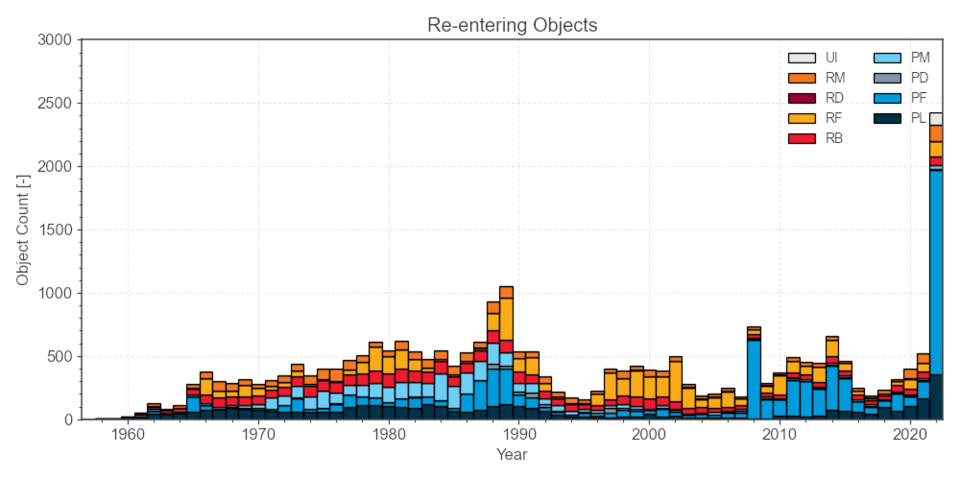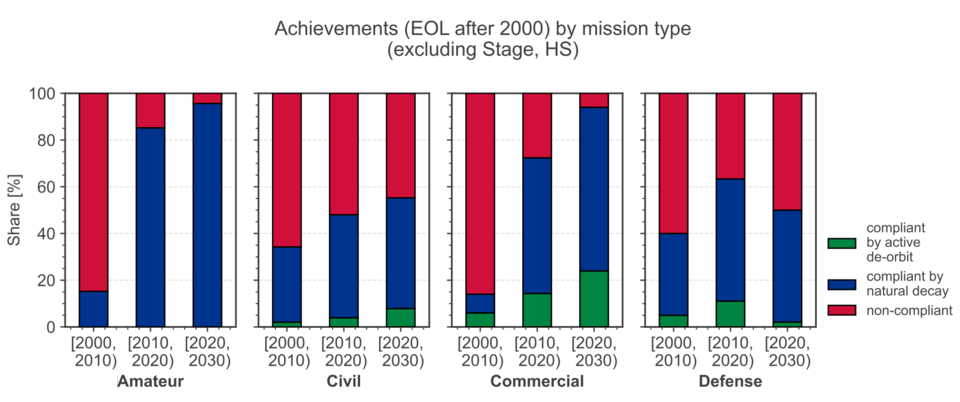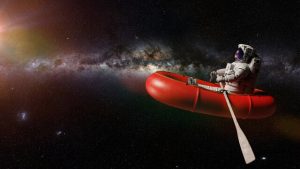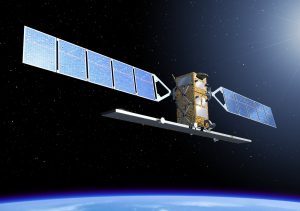ESA Space Environment Report 2022 – ‘record number’ of satellite re-entries
16th Aug 2023
The year 2022 saw the most significant number of satellite Earth re-entries ever, primarily driven by the Russian anti-satellite test of Kosmos 1408. The European Space Agency (ESA) has just published the seventh edition of its Space Environment Report to determine how the globe is mitigating the impacts of orbital debris, and how it could do better. ESA Space Environment Report 2022 shows some trends that give hope for a more sustainable space environment.
The past few years have shown unprecedented growth in satellite launches, especially in Low Earth Orbit (LEO), and the report conveyed that 2022 broke records for how many objects returned to the Earth’s atmosphere. Further, the report claimed that the commercial sector is leading the charge in adopting space debris mitigation measures above civil, defense, and amateur operators.
Inside the ESA Space Environment Report 2022
Years before ESA published its first report, the Inter-Agency Debris Coordination Committee (IADC) released the Space Debris Mitigation Guidelines in 2002. In 2007, these guidelines were approved by the 63 Scientific and Technical Subcommittee (STSC) member nations. ESA said the measures described in the guidelines focus on “how to design, fly, and dispose of space missions in ways that prevent the creation of further debris”, and were a “major step” in setting the standards of protecting important orbits.
ESA published the first space environment report in 2016 to “provide a transparent overview of global space activities and determine how well these and other international debris-reduction measures are improving the long-term sustainability of spaceflight”, according to the agency.
A record-breaking number of satellite re-entries
While there were several topics discussed in the report, some points are particularly worth a closer look. Firstly, 2022 was a record year for the number of “human-made” objects returning through the Earth’s atmosphere.
“The accelerated use of space over the last years continued unabated in 2022, leading to launch and re-entry traffic rates to see new records and challenges in keeping accurate track of the state of the environment”, the report stated.
ESA explained that while 2022 saw a record number of satellites return, the large number was mostly driven by the falling ‘payload fragments’ – over 2,000 pieces – of the Russian anti-satellite test that occurred in November 2021.

Kosmos 1408 was a satellite operated by the Soviet Union after launching into LEO in 1982. After two years of use, it became inactive and had been orbiting since. However, on 15th November 2021, Russia destroyed the satellite by completing an anti-satellite test, which was heavily condemned by other spacefaring nations. The test created over 1,500 pieces of debris and posed a threat to astronauts on the International Space Station (ISS).
Further, ESA claimed that most objects returning into Earth’s atmosphere were uncontrolled. “This helps to keep orbits clear of inactive space junk, but the owner has no control over where in Earth’s skies it will break up and where any surviving fragments will land,” the report claimed.
While this has previously been touted as impossible to change for satellites created many years ago without the ability to return in a controlled, or assisted, manner, ESA recently achieved this with Aeolus in July. Aeolus, a satellite that profiled the Earth’s wind and was built in the 1990s, was not created to achieve a controlled re-entry. However, ESA used its remaining fuel after the satellite retired to try and assist its return through the Earth’s atmosphere, with the aim of controlling where the debris would fall. The mission was successful and showed ESA that older satellites could have the ability to return according to modern guidelines with proper planning and dedication.
ESA said in the report: “A controlled reentry allows operators to remove their hardware from protected regions more quickly and with greater control over where, when and how it reenters – and even lands – at the cost of allocating some fuel to do so.
“If space debris mitigation guidelines become stricter in the coming years, satellites may also have to vacate protected regions more quickly than they do today and in an even safer manner. One way of achieving this is designing the satellite to perform a controlled reentry at the end of its mission.”
Commercial industry leads debris mitigation
Among the core mission types within the space industry, the commercial sector is complying with international debris mitigation guidelines to a greater degree than civil, amateur, and defense operators. According to the guidelines, satellites are responsible for vacating protected orbits within 25 years after the object has completed its mission, whether that means returning through the Earth’s atmosphere or moving to a graveyard orbit.

The image above shows that the commercial sector has been the most compliant in active de-orbiting. In fact, the commercial industry has improved its compliance within this decade, with civil not far behind. However, the defense industry has decreased in compliance. “Early constellation satellites had very low compliance, for example, while the compliance of those launched this decade is almost 100%”, ESA stated.







Thank you for your comment! It will be visible on the site after moderation.